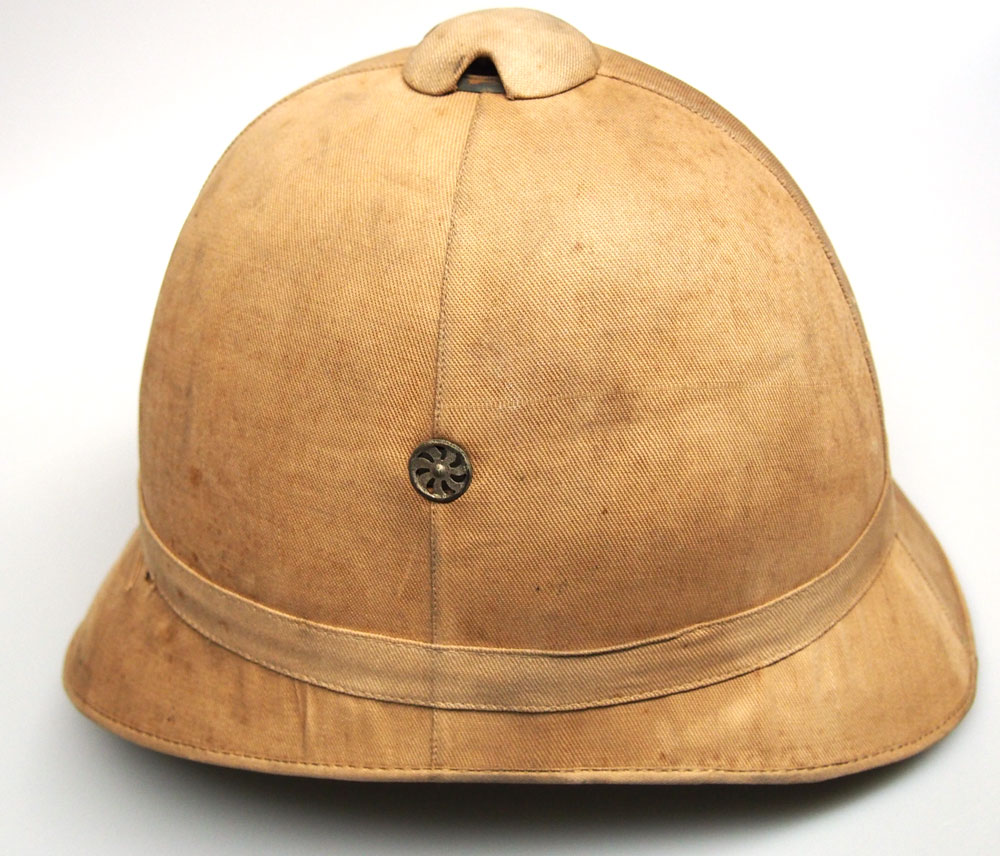 Recently this reporter came across the most unique of American military sun helmets from the 19th century, but that is actually only half the story. In addition to the first helmet, a second one was found at the Baltimore Antique Arms Show. It is a rather simple New York National Guard type helmet, but what makes this one of note is that while most of those are typically found heavily whitened this one has never been whitened and is in its native/naked khaki.
Recently this reporter came across the most unique of American military sun helmets from the 19th century, but that is actually only half the story. In addition to the first helmet, a second one was found at the Baltimore Antique Arms Show. It is a rather simple New York National Guard type helmet, but what makes this one of note is that while most of those are typically found heavily whitened this one has never been whitened and is in its native/naked khaki.
An American Helmet Variation
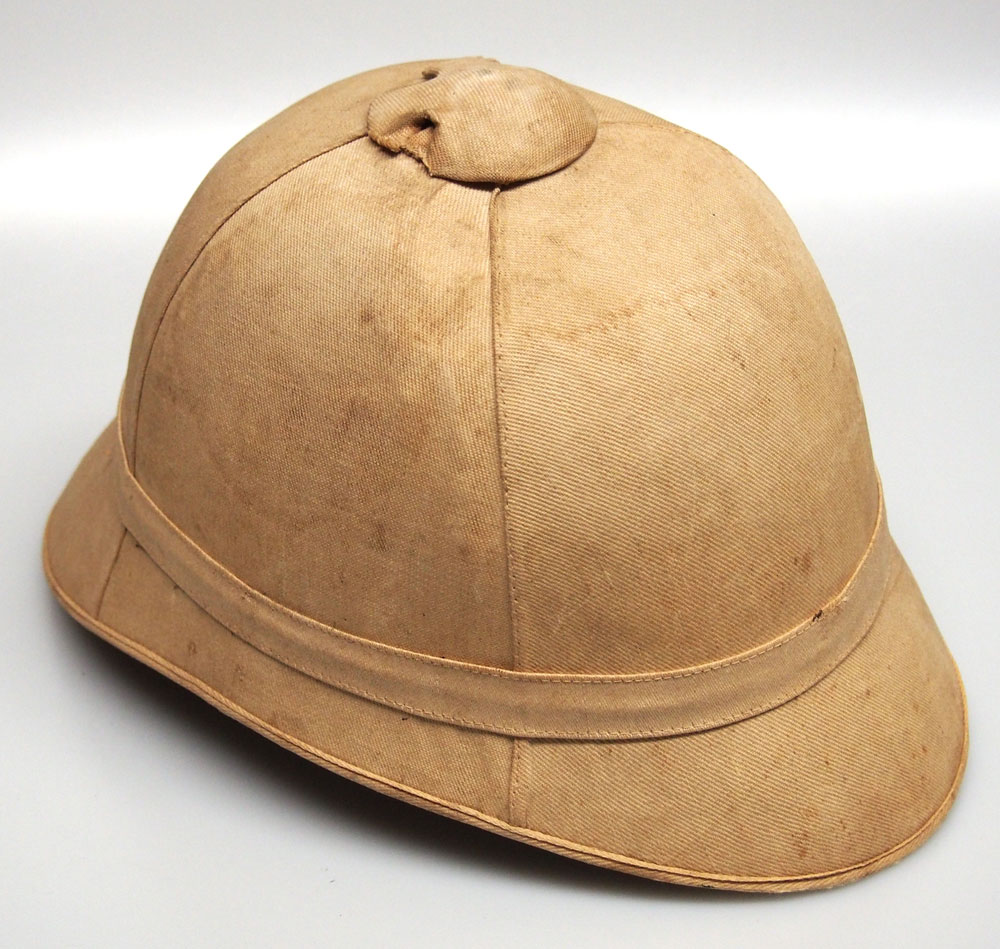 Understanding the sun helmets of the U.S. Army and even the United States Marine Corps that were used during the 19th century is rather simple as it comes down to the Model 1880, Model 1887 and Model 1989 helmets. These were the three main helmets used by regular Army – while the USMC did apparently use the Model 87/89 to some extent.
Understanding the sun helmets of the U.S. Army and even the United States Marine Corps that were used during the 19th century is rather simple as it comes down to the Model 1880, Model 1887 and Model 1989 helmets. These were the three main helmets used by regular Army – while the USMC did apparently use the Model 87/89 to some extent.
Where the issue is harder to understand is when it comes to the militias and National Guard units. While it is known that several patterns existed for these as well, most seem to be fairly uniform and follow the same basic parameters of the Army style helmets. These were four seams, with a front/back and side seams. Now another helmet was found that turns all this on its axis! Continue reading
A Second Pressed Fiber Wolseley
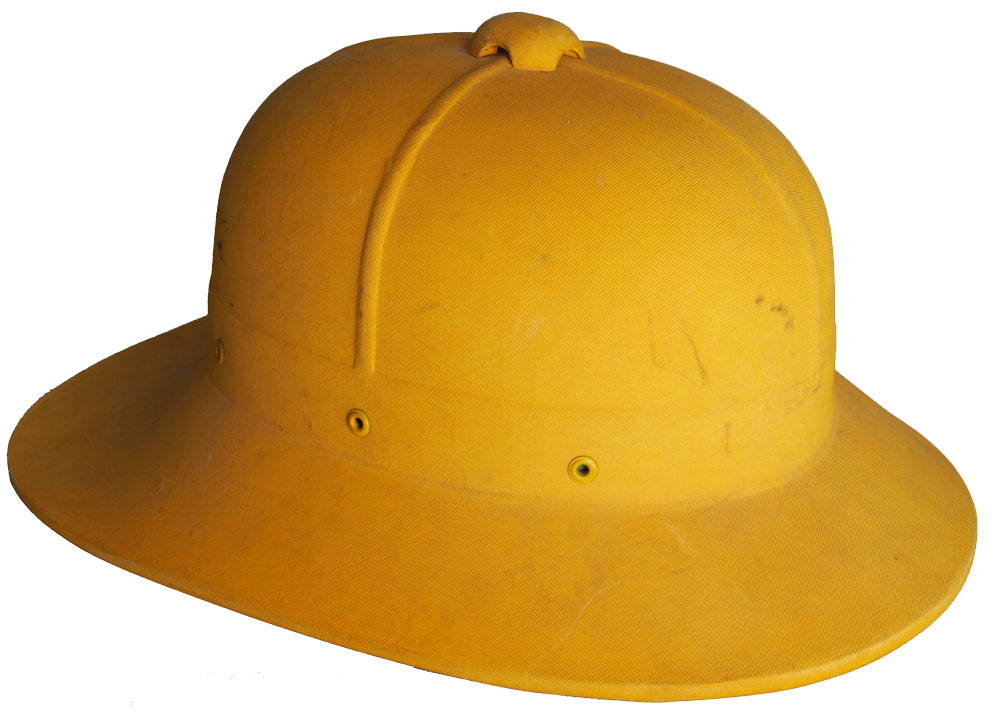
It is odd how when one item suddenly is found another shows up! It could be that some things are more common than we realize and didn’t notice previously, or perhaps multiple items were uncovered at the same time. In this case it is the Canadian pressed fiber naval style Wolseley.
The Pressed Fiber Forming Buck
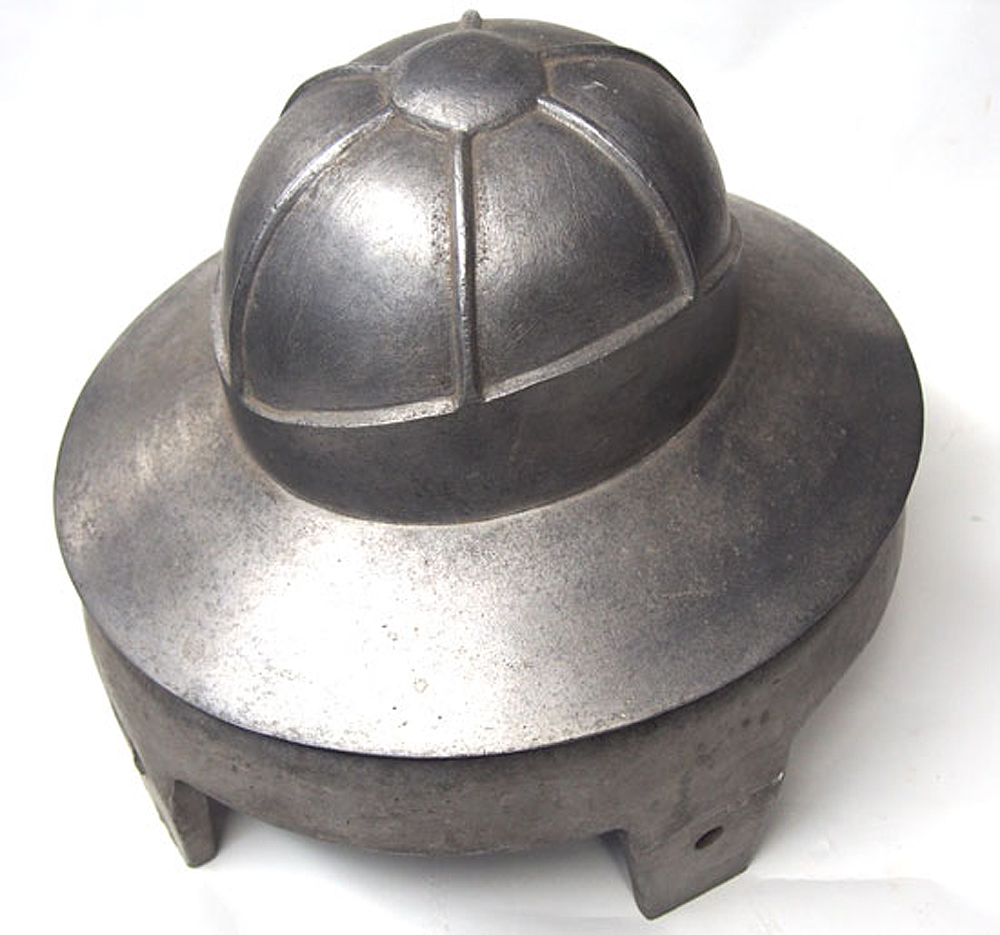 In the summer of 2017 a unique item (above) showed up at auction and this reporter was fortunate to obtain it – it appeared to be a press or form for the American pressed fiber sun helmet. Recently a reader explained to me exactly how this item was used, and now it confirms that this was in fact used by Hawley Products Company, the maker of the pressed fiber helmets. Continue reading
In the summer of 2017 a unique item (above) showed up at auction and this reporter was fortunate to obtain it – it appeared to be a press or form for the American pressed fiber sun helmet. Recently a reader explained to me exactly how this item was used, and now it confirms that this was in fact used by Hawley Products Company, the maker of the pressed fiber helmets. Continue reading
Hawkes & Company’s Steel Helmet Connection
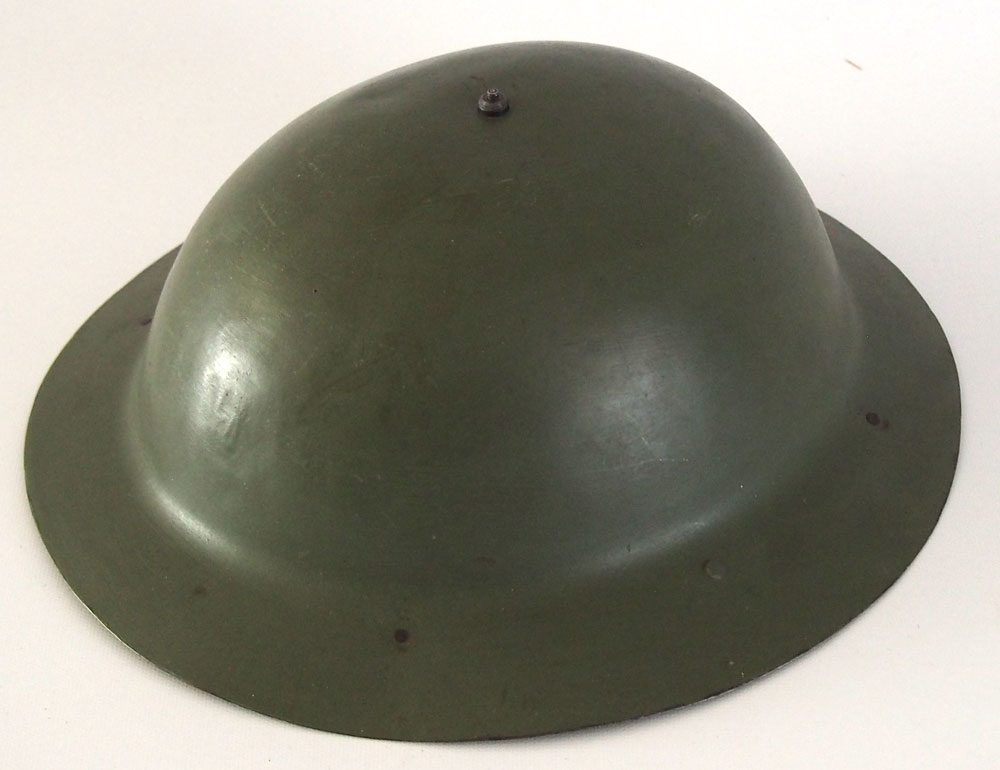 While steel helmets never completely disappeared from the battlefield – and helmets were worn by cavalry units throughout the 18th and 19th centuries – at the outbreak of the First World War in 1914 most British infantrymen wore only the Home Service Helmet as part of a dress uniform and for parade type duties. Forage caps were the standard headdress for soldiers in the field, but by 1916 it was apparent that soft caps as well as sun helmets that were worn in tropical regions weren’t enough to protect against head wounds from artillery barrages or other low velocity impacts. Continue reading
While steel helmets never completely disappeared from the battlefield – and helmets were worn by cavalry units throughout the 18th and 19th centuries – at the outbreak of the First World War in 1914 most British infantrymen wore only the Home Service Helmet as part of a dress uniform and for parade type duties. Forage caps were the standard headdress for soldiers in the field, but by 1916 it was apparent that soft caps as well as sun helmets that were worn in tropical regions weren’t enough to protect against head wounds from artillery barrages or other low velocity impacts. Continue reading
British Desert Goggles: Khartoum to Tunis
Here the term ‘Desert Goggles’ is taken as those goggles which seem to have been issued to British Empire Troops specifically for use in desert campaigns in the late 19th to mid 20th Century. These goggles differ from the more ubiquitous; dust; general purpose; transport; tank; dispatch rider; mountain and snow goggles issued from mid-WWI by most nations, in being campaign specific. The three main goggle types discussed here were used in the Sudan (1882-98); the Mesopotamian (1914-18) and the North African (1940-43) campaigns respectively.
The Pressed Fiber “Wolseley Style” Helmet
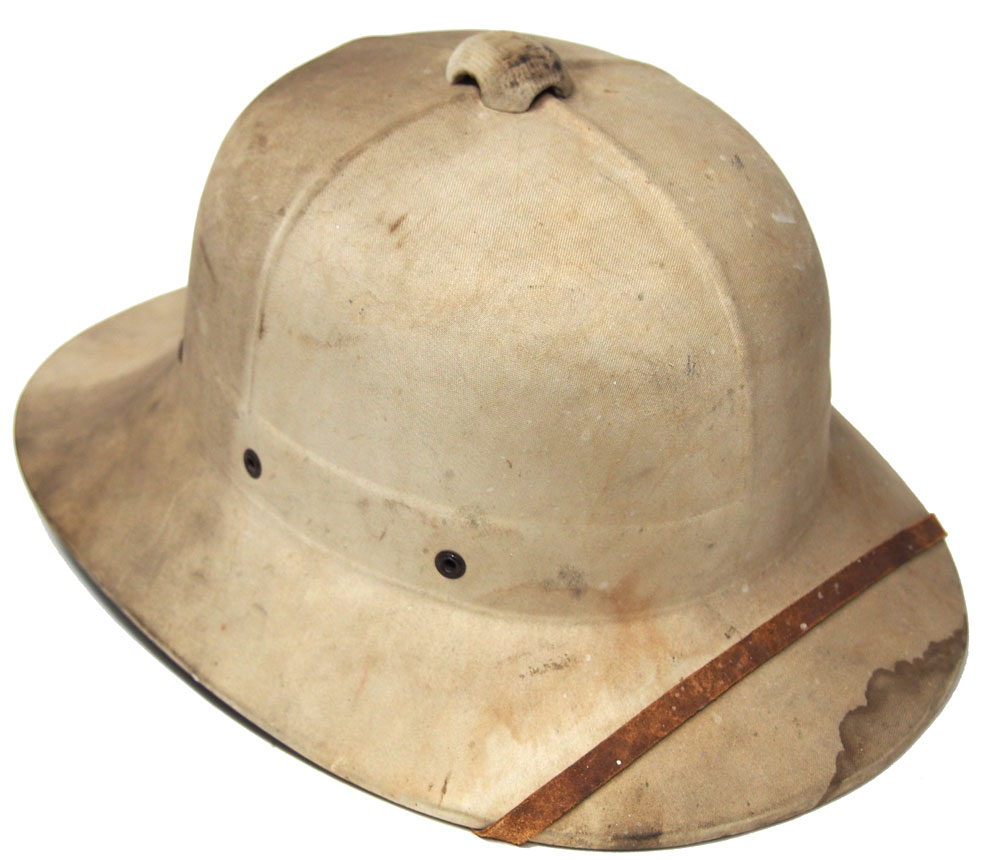 Since launching this website in early 2012 we’ve encountered numerous helmets that haven’t been largely documented, if documented at all. We’ve come across a number of helmets that can only be described as variations of the classic British Wolseley style helmet. These have included helmets made of sola pith, but recently a far more unusual example was offered for sale on eBay. It is a Canadian-made helmet that appears to be based on the naval helmet that was based on the Wolseley. Continue reading
Since launching this website in early 2012 we’ve encountered numerous helmets that haven’t been largely documented, if documented at all. We’ve come across a number of helmets that can only be described as variations of the classic British Wolseley style helmet. These have included helmets made of sola pith, but recently a far more unusual example was offered for sale on eBay. It is a Canadian-made helmet that appears to be based on the naval helmet that was based on the Wolseley. Continue reading

